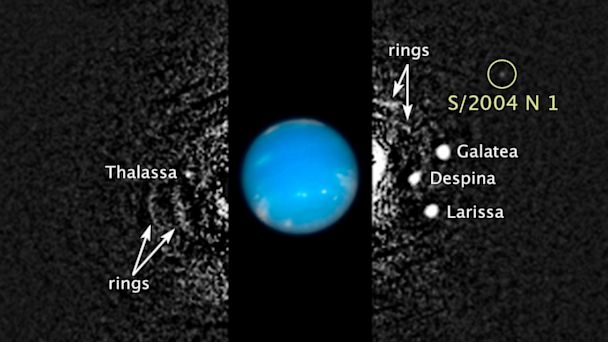Neptunian Moon Discovered by Looking Through Hubble's Photo Collection

(NASA, ESA, M. Showalter/SETI Institute)
It turns out that stars aren't the only ones capable of a good photobomb. Moons can photobomb too. Michael Showalter of the SETI Institute recently discovered one in the background of photos nearly a decade old collected from the Hubble Space Telescope.
Showalter was originally studying Neptune's "faint arcs," or ring segments. Both the planet's moons and its faint arcs orbit quickly, so the Hubble telescope took several quick photographs in succession rather than a single, long-exposure photo.
"It's the same reason a sports photographer tracks a running athlete - the athlete stays in focus, but the background blurs," he said in a statement.
In addition to getting high-quality photos of Neptune's faint arcs, he discovered a small moon orbiting the planet approximately 65,400 miles away. It's Neptune's puniest moon, measuring less than 12 miles across. According to NASA, it's also 100 million times fainter than the faintest star that can be seen by the naked eye.
Currently, the new moon's name is S/2004 N 1. Compared to Neptune's other moons (Triton, Nereid, Thalassa, among many others), the name doesn't exactly evoke oohs and aahs. But Showalter eventually sees the moon getting a mythical name.
"There's still an interesting list of sea creatures one can choose from," he said in an interview with The New Scientist.